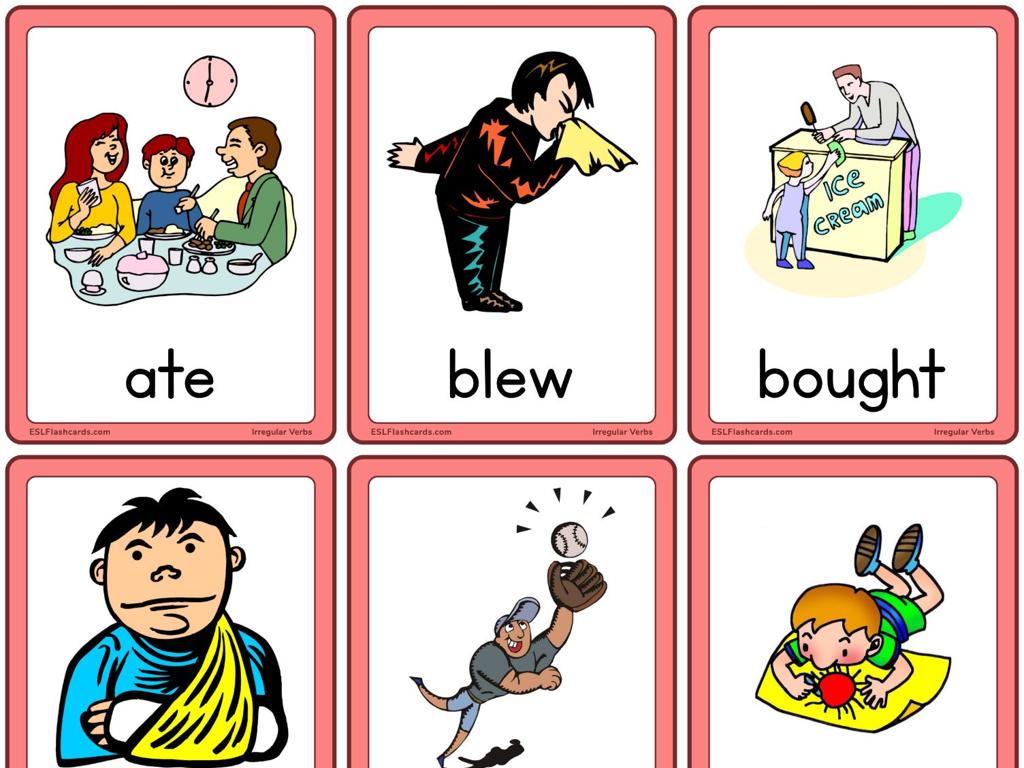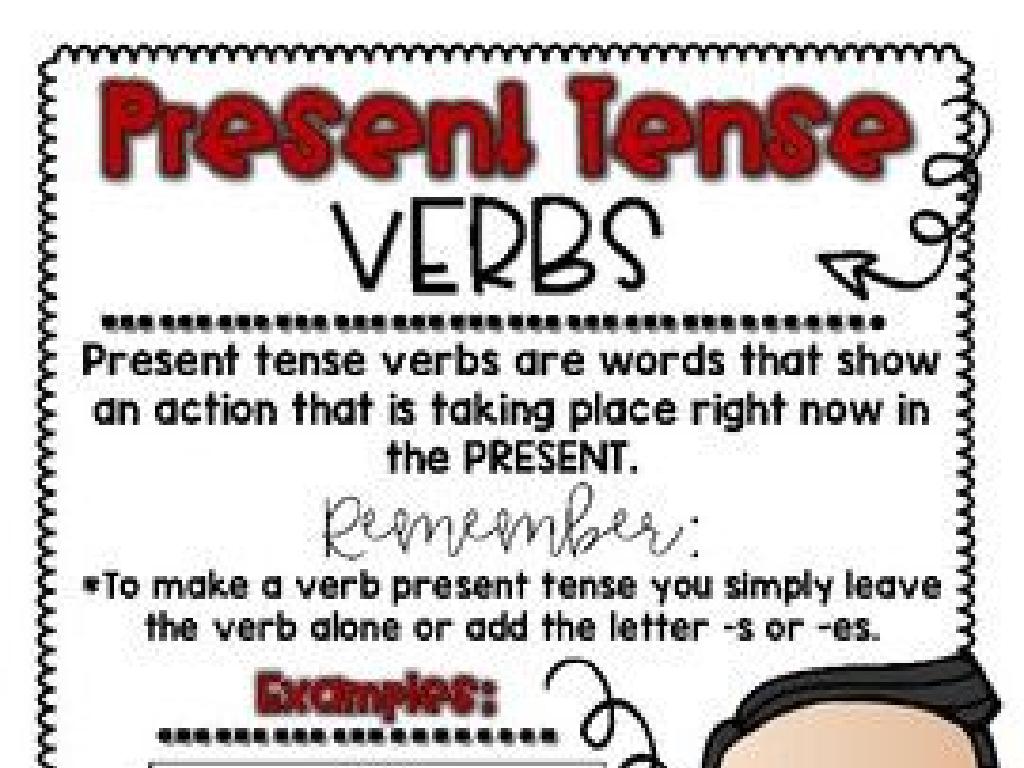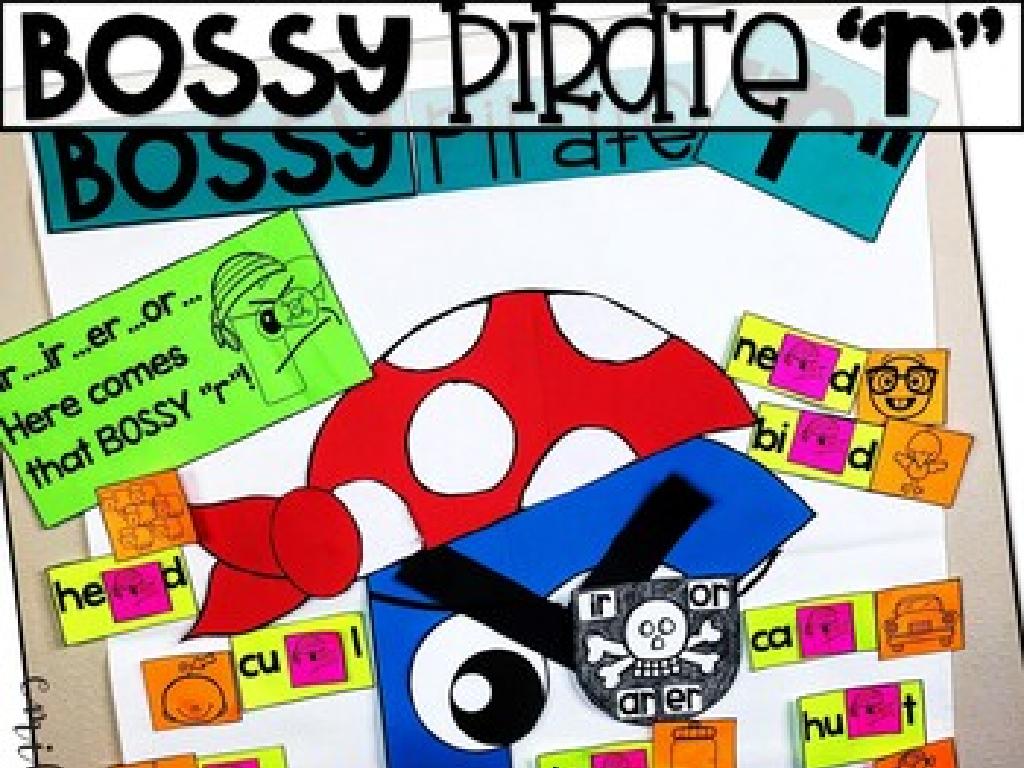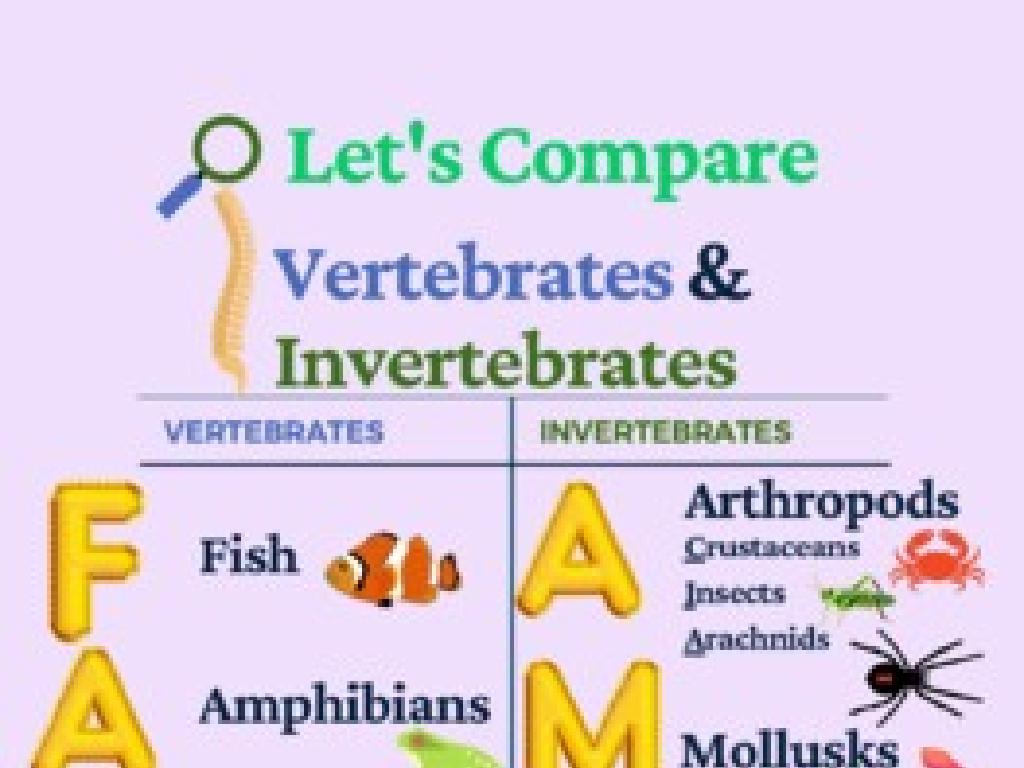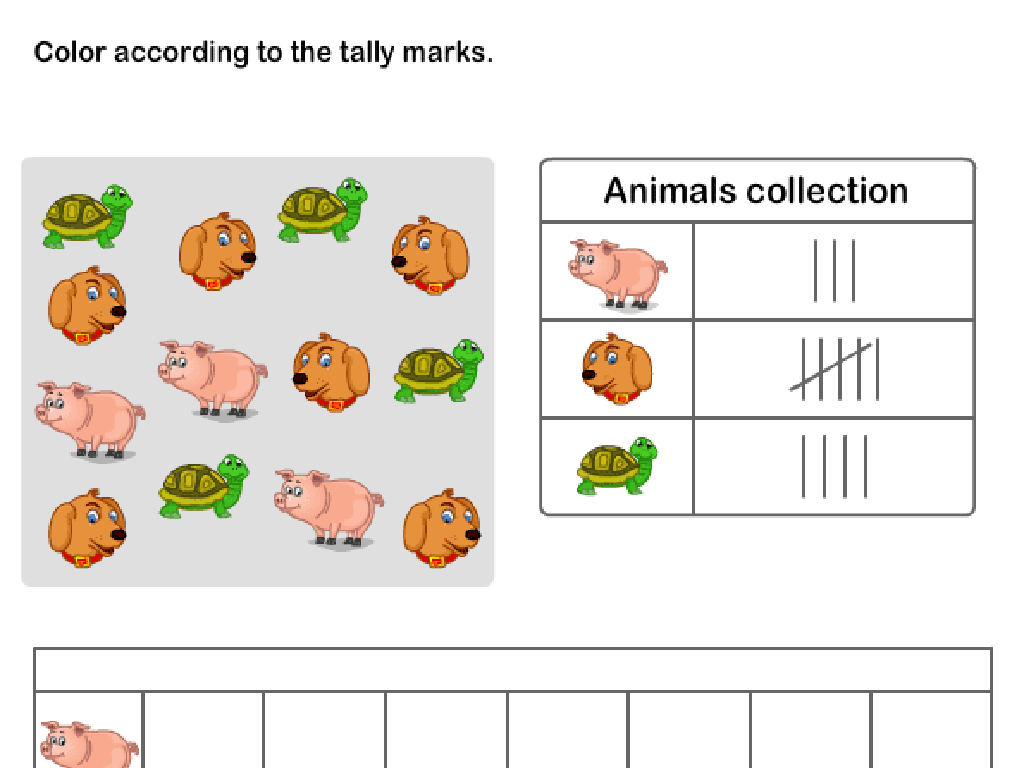Form Plurals Of Nouns Ending In F, Fe, O, And Y
Subject: Language arts
Grade: Sixth grade
Topic: Nouns
Please LOG IN to download the presentation. Access is available to registered users only.
View More Content
Plural Forms of Special Nouns
– ‘f’ or ‘fe’ endings usually change to ‘ves’
– e.g., ‘leaf’ becomes ‘leaves’, ‘knife’ to ‘knives’
– Most ‘o’ endings add ‘es’
– e.g., ‘potato’ becomes ‘potatoes’, ‘echo’ to ‘echoes’
– ‘y’ endings change to ‘ies’ if preceded by a consonant
– e.g., ‘baby’ becomes ‘babies’, but ‘day’ to ‘days’
– Some exceptions apply to these rules
|
This slide introduces students to the rules for forming plurals of nouns ending in ‘f’, ‘fe’, ‘o’, and ‘y’. Start by explaining that while most nouns simply add an ‘s’ to become plural, these special endings have their own rules. Provide examples for each rule to illustrate the changes. It’s also important to highlight that there are exceptions, such as ‘roof’ to ‘roofs’ or ‘piano’ to ‘pianos’, and encourage students to learn these through practice. Engage the class with interactive activities where they convert singular nouns to their plural forms and identify patterns or exceptions.
Understanding Nouns: The Basics
– Define a noun
– A noun is a word for a person, place, thing, or idea
– Nouns represent entities
– ‘cat’ for a pet, ‘school’ for a place of learning
– Examples of nouns
– ‘book’ as an object, ‘happiness’ as a concept
– Plurals of special nouns
– Focus on nouns ending in f, fe, o, and y
|
This slide introduces the concept of nouns to the students, explaining that nouns are words used to name people, places, things, or ideas. Provide clear examples for each category to ensure understanding. Emphasize that nouns can be tangible, like ‘cat’ or ‘book’, or intangible, like ‘happiness’. Transition to discussing the formation of plurals, particularly for nouns ending in f, fe, o, and y, which will be the focus of the following slides. Encourage students to think of more examples and consider how these nouns might change when referring to more than one.
Forming Plurals: f, fe, o, y
– Singular nouns: only one
– Plural nouns: more than one
– Add ‘-s’ or ‘-es’ for most plurals
– Special rules for f, fe, o, y endings
– ‘f’ or ‘fe’ often change to ‘ves’, ‘o’ usually adds ‘es’, ‘y’ to ‘ies’ if preceded by a consonant
|
This slide introduces the concept of singular and plural nouns, focusing on the general rule of adding ‘-s’ or ‘-es’ to form plurals. Highlight the exceptions for nouns ending in f, fe, o, and y. For example, ‘leaf’ becomes ‘leaves’, ‘knife’ to ‘knives’, ‘tomato’ to ‘tomatoes’, and ‘baby’ to ‘babies’. Emphasize that these are general guidelines but there are exceptions to the rules. Encourage students to think of more examples and understand the reason behind these spelling changes. This will prepare them for an activity where they will practice converting singular nouns to their plural forms.
Plural Forms: ‘f’ and ‘fe’ Endings
– ‘f’ or ‘fe’ to ‘ves’ in plurals
– When a noun ends in ‘f’ or ‘fe’, the plural often ends in ‘ves’
– ‘leaf’ to ‘leaves’, ‘knife’ to ‘knives’
– For example, ‘half’ becomes ‘halves’, ‘wife’ becomes ‘wives’
– Practice changing singular to plural
– Find nouns ending in ‘f’ or ‘fe’ and write their plural forms
– Rules are not always consistent
– Some nouns add ‘s’ instead, like ‘roof’ to ‘roofs’
|
This slide introduces the concept of forming plurals for nouns ending in ‘f’ or ‘fe’. Start by explaining the general rule where ‘f’ or ‘fe’ changes to ‘ves’ for words like ‘leaf’ and ‘knife’. Provide additional examples such as ‘half’ to ‘halves’ and ‘wife’ to ‘wives’. Engage the class with a practice activity where they convert singular nouns to their plural forms. Highlight that English has exceptions to this rule, such as ‘roof’ which simply adds ‘s’ to become ‘roofs’. Encourage students to think of other examples and discuss any irregularities they may find.
Plurals Ending in ‘o’
– Most ‘o’ ending nouns add ‘-s’
– ‘photo’ changes to ‘photos’
– A single image becomes many images
– Some add ‘-es’, like ‘potatoes’
– ‘potato’ needs friends, so we add ‘-es’ to make it ‘potatoes’
– Let’s learn the pattern
– We’ll explore rules to know when to use ‘-s’ or ‘-es’
|
This slide introduces the rules for forming plurals of nouns ending in ‘o’. Start by explaining that most nouns simply add an ‘-s’. Use ‘photo’ as a clear example. Then, highlight the exception where some nouns require ‘-es’ to become plural, using ‘potato’ as an example. Engage the class by asking them to come up with their own examples of each case. To reinforce the lesson, create a class activity where students list nouns ending in ‘o’ and decide if they need ‘-s’ or ‘-es’ to become plural. This interactive approach will help students understand and remember the pluralization pattern.
Plural Forms of Nouns Ending in ‘y’
– Consonant + ‘y’ to ‘ies’
– Change ‘y’ to ‘ies’ for words like ‘city’ to ‘cities’
– Vowel + ‘y’ to ‘ys’
– Simply add ‘s’ for words like ‘toy’ to ‘toys’
– ‘puppy’ to ‘puppies’
– ‘day’ to ‘days’
|
This slide focuses on the rules for forming plurals of nouns ending in ‘y’. When a noun ends in a consonant followed by ‘y’, the ‘y’ is changed to ‘ies’ to make the word plural. For example, ‘puppy’ becomes ‘puppies’. However, if the noun ends in a vowel followed by ‘y’, you only need to add an ‘s’. For instance, ‘day’ becomes ‘days’. Encourage students to identify the vowel and consonants in words to apply the correct rule. Provide additional examples and have students practice by writing sentences using both singular and plural forms of nouns ending in ‘y’. This will help them understand and remember the concept.
Exceptions and Irregular Plurals
– English has rule exceptions
– Some nouns have unique plurals
– ‘man’ to ‘men’, ‘child’ to ‘children’
– Unlike ‘roof’ to ‘roofs’, these change form
– Use a dictionary for uncertainty
– A reliable dictionary can confirm spellings
|
This slide addresses the irregularities in forming plurals in English, emphasizing that while there are general rules, many exceptions exist. Highlight the importance of recognizing that some nouns completely change form rather than just adding an ‘s’ or ‘es’. Use ‘man’ and ‘child’ as clear examples of this irregularity. Encourage students to use a dictionary as a definitive source for checking the plural forms of nouns, especially the irregular ones. This will help them understand that language can be unpredictable and that resources like dictionaries are valuable tools for clarification.
Class Activity: Plural Scavenger Hunt
– Find items ending in ‘f’, ‘fe’, ‘o’, ‘y’
– Write singular and plural forms
– Example: leaf, leaves / buffalo, buffaloes
– Share findings with the class
– Understand pluralization rules
– Learn how nouns change from singular to plural
|
This interactive class activity is designed to help students understand the rules for forming plurals of nouns ending in ‘f’, ‘fe’, ‘o’, and ‘y’. Students will search the classroom for items that end with these letters, write down both the singular and plural forms, and then share their findings with the class. This will not only reinforce the spelling rules but also encourage peer learning and discussion. For the teacher: Prepare a list of potential items that may be found in the classroom to ensure a successful hunt. Be ready to guide students on the different pluralization rules, such as changing ‘y’ to ‘ies’ or adding ‘es’ for certain words ending in ‘o’. Have a few examples ready for each case to help students who may struggle to find items.
Wrapping Up: Plurals and Homework
– Congrats on mastering plurals!
– Homework: 10 sentences with plurals
– Incorporate words like ‘leaves’ or ‘knives’
– Use nouns ending in f, fe, o, y
– Examples: ‘buffaloes’, ‘pennies’
– Share your work next class
|
Today’s lesson focused on forming plurals for nouns ending in f, fe, o, and y. As a conclusion, praise the students for their hard work and understanding. For homework, they are tasked with writing 10 sentences that include plural nouns covered in the lesson. This will help reinforce their learning and provide practice in using these plurals in context. Encourage creativity and the use of a variety of words. In the next class, students will have the opportunity to share their sentences, allowing them to learn from each other’s examples and further solidify their grasp of the concept.

